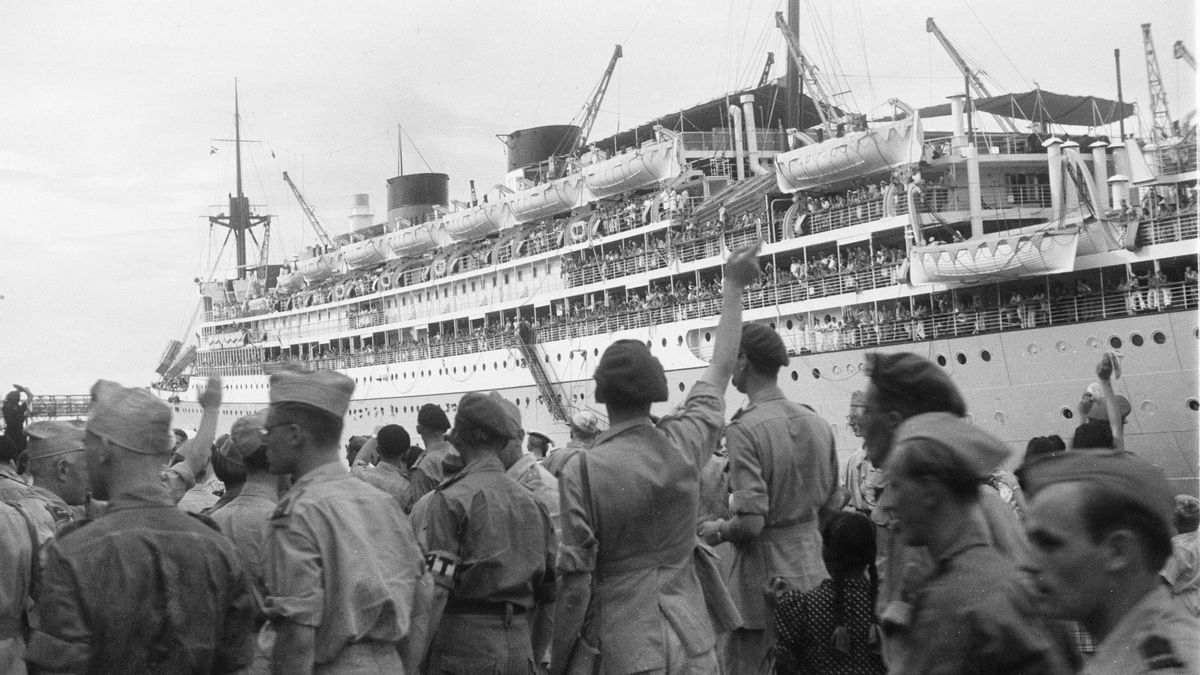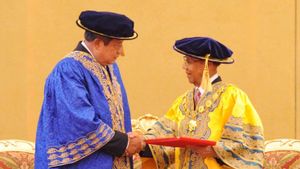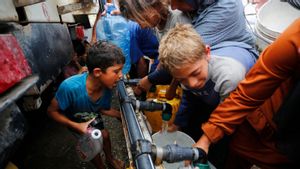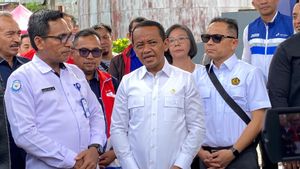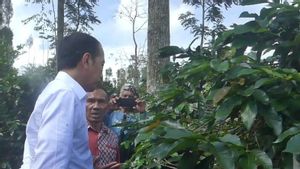JAKARTA - Tanjung Priok Port is an important economic area in Jakarta. At the port, the economic turnover is so great, it has even become the main pulse of the economy in Jakarta until now. The greatness of Tanjung Priok Port had been predicted by the Company long before Indonesia's independence. The Dutch colonial government at that time needed a bigger port. As a result, Tanjung Priok Port was built in 1877.
The reason for the construction of the Tanjung Priok Port is because the Sunda Kelapa Port is experiencing silting. The Company is dizzy. Steam ships were no longer able to lean there, so those who sailed from abroad had to lean far on the shore.
As a result, loading and unloading of goods takes a very long time because they have to be lifted by boat first. As quoted by Alwi Shahab in the book Waktu Holland Drunk was Born Batavia (2013), because of all the existing problems, the Company then decided to move the Sunda Kelapa Harbor.
And the Tanjung Priok area was chosen as its replacement. Even though the distance was quite far, about 7 kilometers, the Company felt it was the best option because the Suez Canal, which could shorten ship travel, was opened in 1869.
“In 1868, when the Suez Canal opened, which shortened ocean voyages from Europe to Asia as well as the emergence of steamships, had an effect on Batavia. The city that was built by Jan Pieterszoon Coen was then crowded with immigrants from Europe. Likewise with ocean ships loading and unloading. The construction of Tanjung Priok Port coincided with the Singapore port which was built by Raffles in 1819, "said one of the important figures in the writing of the history of Jakarta, Alwi Shahab.
When Tanjung Priok was chosen as the location, many businessmen in Batavia opposed it because it was too far from the port of Sunda Kelapa. Fortunately, the enthusiasm of investors who came to invest in Batavia made the presence of the Tanjung Priok port, which was only completed in 1886, acceptable to all businessmen.
Therefore, the emergence of the Tanjung Priok port, then occupies a major position in West Java import-export affairs. It was so busy that the tonnage of the ships had greatly increased over the years. To that end, the Port of Tanjung Priok was expanded again in 1912. This was because nearly 200 ships were waiting for their turn to dock.
"Regarding exports, almost all shipments of Javanese tea and quinine products take place at this port. As for rubber and processed vegetable oil, Tanjung Priok also occupies the first place among other Java ports. The transfer of loads of several products, including Bangka tin, pepper and several wood products from the Outer islands, also took place here, "wrote Dr. J. Stroomberg in the book Dutch East Indies 1930 (2018).

That's just from the export. Tanjung Priok as an import port is no less impressive. At that time, Tanjung Priok was ranked first among Java ports in terms of imports of food and beverage ingredients. Tanjung Priok even ranks second after Surabaya port, for cotton and yarn goods, machines, tools, cars, and for several other less important goods.
In line with that, at the expansion of the port the colonial government began building supporting facilities at Tanjung Priok. Some of these include the addition of the Batavia-Buitenzorg (Bogor) railway line, the establishment of the Tanjung Priok Railway Station, and the Ancol waterway to Mangga Besar beside the Priok-Jakarta Kota (Beos) railway line. In addition, in that area a highway was also built that connected Tanjung Priok-Weltevreden (the area around the Banteng Field) and Meester Cornelis (Jatinegara).
Tanjung Priok as a Passenger PortPreviously, aircraft began to be favored by the people of the Dutch East Indies for traveling, sea transportation became an alternative travel between countries that could be reached by all Indies people. Therefore, Tanjung Priok has become one of the most popular ports in Java as a passenger port.
Several Dutch people who had come to Batavia to try their luck had captured the momentum of their arrival to the Dutch East Indies via Tanjung Priok. One of them was Dutch soldier HCC Clockener Brousson. In his book entitled Batavia Early 20th Century (2004), the Amsterdam child, who for the first time came to Batavia via Tanjung Priok, admitted that he was impatient to immediately take a walk around the city entitled Queen of the East.

“As we got closer, we observed that among the people waving at us, namely the Europeans dressed in the distinctive white color, as well as the brown skinned indigenous people, and the yellow Chinese. Immediately we realized we were in the Indies in the tropical Netherlands, ”said Clockener.
Unfortunately, Clockener arrived at Batavia at night. In that sense, the happiness of being able to walk around Batavia must be delayed for a while. It was none other than because the new port officials allowed the passengers to get off the ship the next day. Nevertheless, staying on a boat at the port of Tanjung Priok was an unforgettable experience for Clockener.
“Poor soldiers have to stay on the boat. Our first night in the Indies was very unpleasant because we had to breathe in the stench of the swamp which smelled amazing. Then, then the attack of Priok mosquitoes that enthusiastically suck our fresh imported blood from the Netherlands. As a result, we couldn't sleep, "he added.
Not only Clockener, four Dutch women named Dolly, Miny, Annie, and Betsy even entered Indonesia when the situation between Indonesia and the Netherlands was critical in 1947. As told by Hilde Janssen in the book Tanah Air Baru, Indonesia (2016), the four women it also reveals his experience when he just arrived at Tanjung Priok.
“Wearing their best summer dresses, Dolly and the Miny, Annie and Betsy brothers sailed into the port of Jakarta (Tanjung Priok). Right on the first day of the new year, they greeted their new homeland. They barely have time to make a first impression because a chaotic arrival requires attention, "concluded Hilde Janssen.
The English, Chinese, Japanese, Arabic, and French versions are automatically generated by the AI. So there may still be inaccuracies in translating, please always see Indonesian as our main language. (system supported by DigitalSiber.id)
